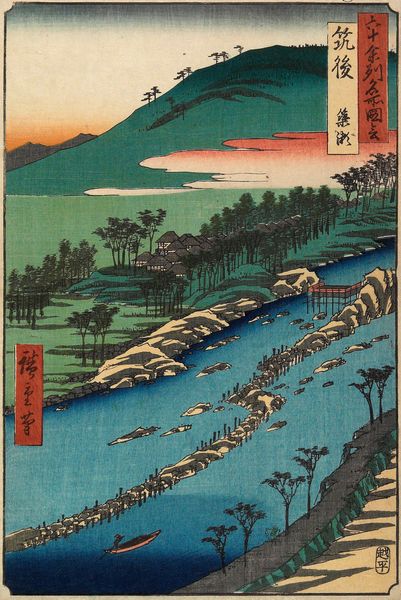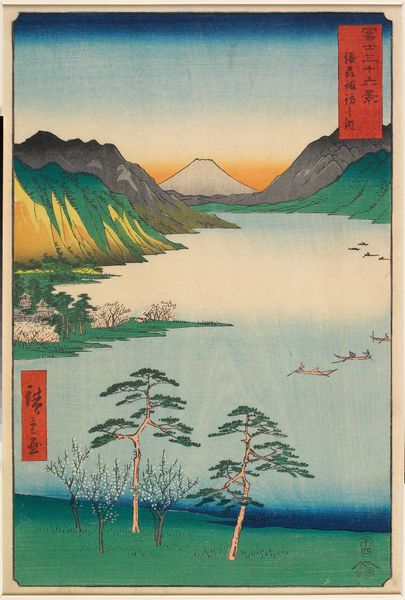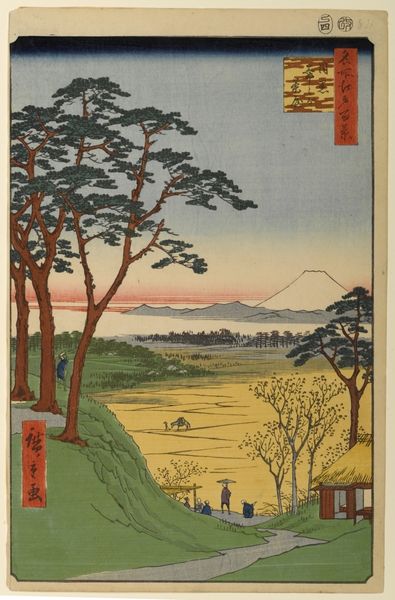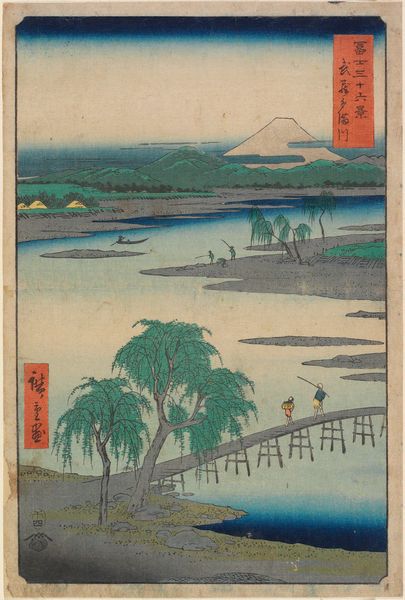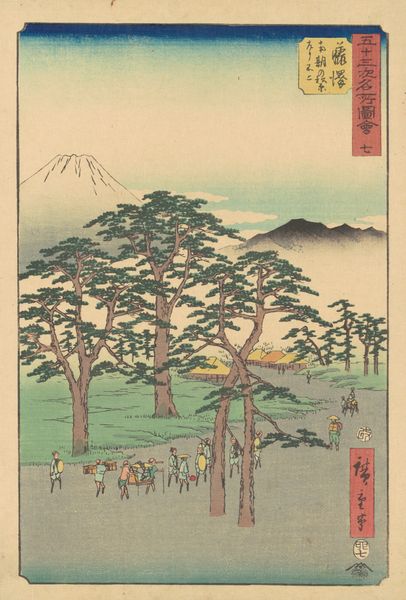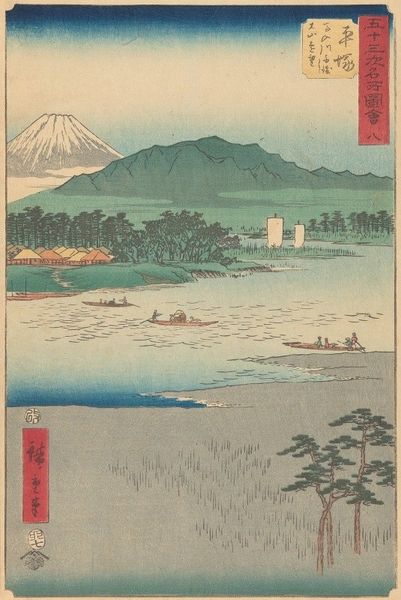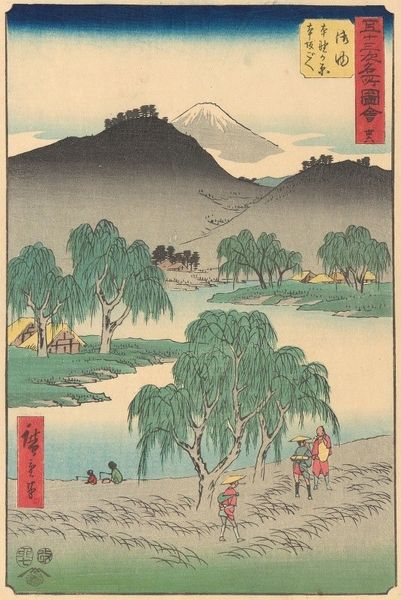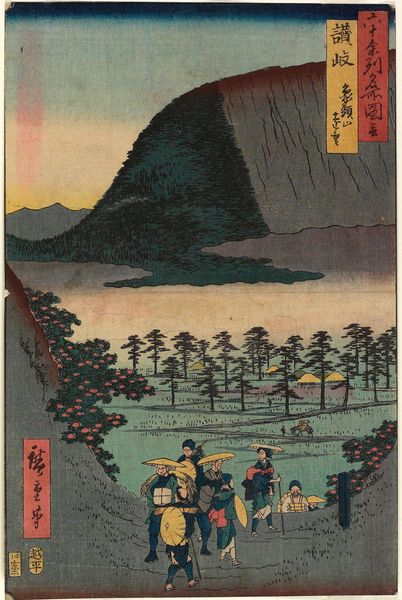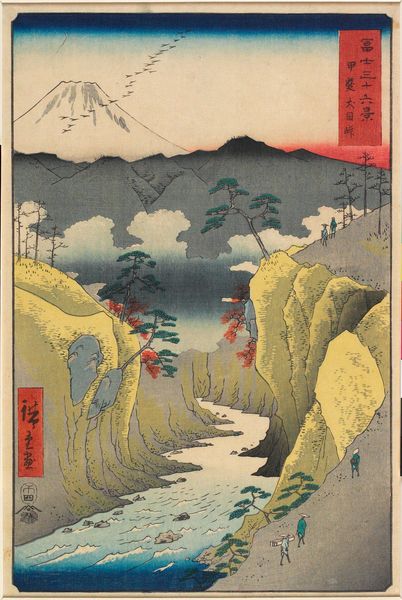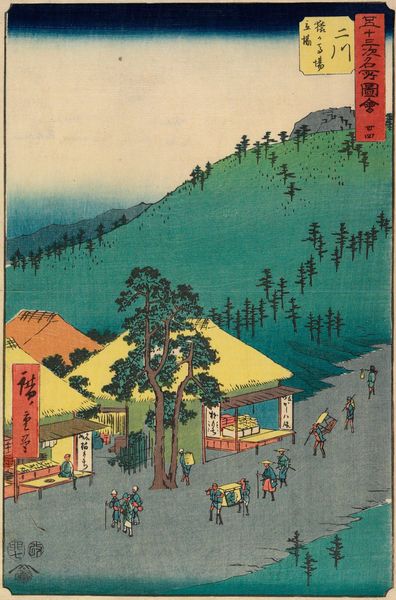
Copyright: Public domain
Curator: Gazing upon this artwork, I feel drawn into a tranquil scene—almost like stepping into a dream. The trees stand tall, framing a reflective lake below, creating a serene, quiet mood. What do you think? Editor: That sense of tranquility isn't accidental. What you are describing echoes the very essence of Utagawa Hiroshige’s woodblock print, “50 (64) Kumano Jūnisha Shrine at Tsunohazu, Known as Jūniso,” dating back to 1857. Curator: Hiroshige, huh? Right, the name rings a bell... I almost feel the need to meditate when I see how the shoreline meets the mountains. Why did he pick this specific scene? What's the bigger story? Editor: It is said this piece reflects the popularity of landscape prints among the rising merchant class of Edo period Japan. Landscapes became symbols of cultural identity and afforded ordinary people access to depictions of famous or symbolic locales previously reserved for the elite. Curator: Huh. "Cultural identity." Makes you wonder who exactly *had* access and who *didn't*, even then. Are the figures in the image, those little wanderers, also trying to connect with something bigger, something outside their daily hustle? Editor: Undoubtedly, their presence enlivens the image but also speaks to the social function art fulfills by memorializing daily life and ritual activities. How people engage with both the natural world, sacred sites and the small dramas that make us human. Curator: Ritual… that makes sense! There is some-kind of spiritual aspect captured with this image. Those placid trees on the side almost seem to be observing the figures that visit the Kumano Jūnisha Shrine. Editor: Exactly! What is implied in a landscape carries weight because representation is never innocent. It reflects the values of both its creators and audience. Curator: It is really wild to think that each stroke tells a bigger story if you just put your ear to the ground, really listen. Editor: Right, so with each impression, with each passing person, we leave marks. It reminds me how much the ordinary contains the extraordinary, if we can still notice.
Comments
No comments
Be the first to comment and join the conversation on the ultimate creative platform.
